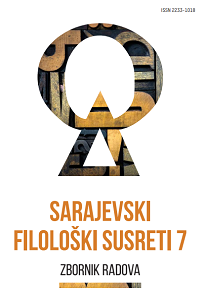Status mocionih sufiksa u savremenom danskom jeziku – femininativi na sprezi rodno senzitivnog/neutralnog jezika, gramatičkog roda i tvorbe reči
The Status of Grammatical Gender Suffixes in Contemporary Danish–Feminine Forms in the Context of Gender Sensitive / Neutral Language, Grammatical Gender and Word Formation
Author(s): Marko PetrićSubject(s): Language studies, Gender Studies, Morphology, Lexis, Philology
Published by: Bosansko filološko društvo
Keywords: contemporary Danish; grammatical gender suffixes; gender neutral language; feminine form; word formation;
Summary/Abstract: Grammatical gender suffixes are not prevalent in contemporary Danish. Instead of employing feminine suffixes, Danish utilizes a generic, gender-neutral form, encompassing all sexes or genders in non-linguistic contexts. While this practice aligns with Danish language policy, advocating for gender-neutral language devoid of inherent gender distinctions in grammatical expression, this paper posits that the status of motion suffixes in Danish is primarily governed by the language’s structure and grammar. Through an analysis of lexemes sourced from the Danish dictionary Den Danske Ordbog, the paper concludes that motion suffixes are not necessarily inherent to Danish for several reasons. First and foremost, grammatical gender suffixes as a linguistic phenomenon originally did not exist in Danish and emerged due to the influence of other languages. Additionally, Danish does not formally recognize the grammatical category of sexus, and the very status of the grammatical gender category remains debatable among scholars. Furthermore, feminine forms in Danish are not inclusive; rather, they serve to delineate a category that is otherwise unmarked in the language, often acquiring derogatory connotations due to their semantic and morphological divergence. Consequently, grammatical gender suffixes are diminishing in usage, new nominal forms lack feminine counterparts, and contemporary grammars increasingly overlook these suffixes altogether as a viable option in Danish word formation.
Journal: Sarajevski filološki susreti: zbornik radova
- Issue Year: 7/2025
- Issue No: 1
- Page Range: 81-100
- Page Count: 20
- Language: Serbian

